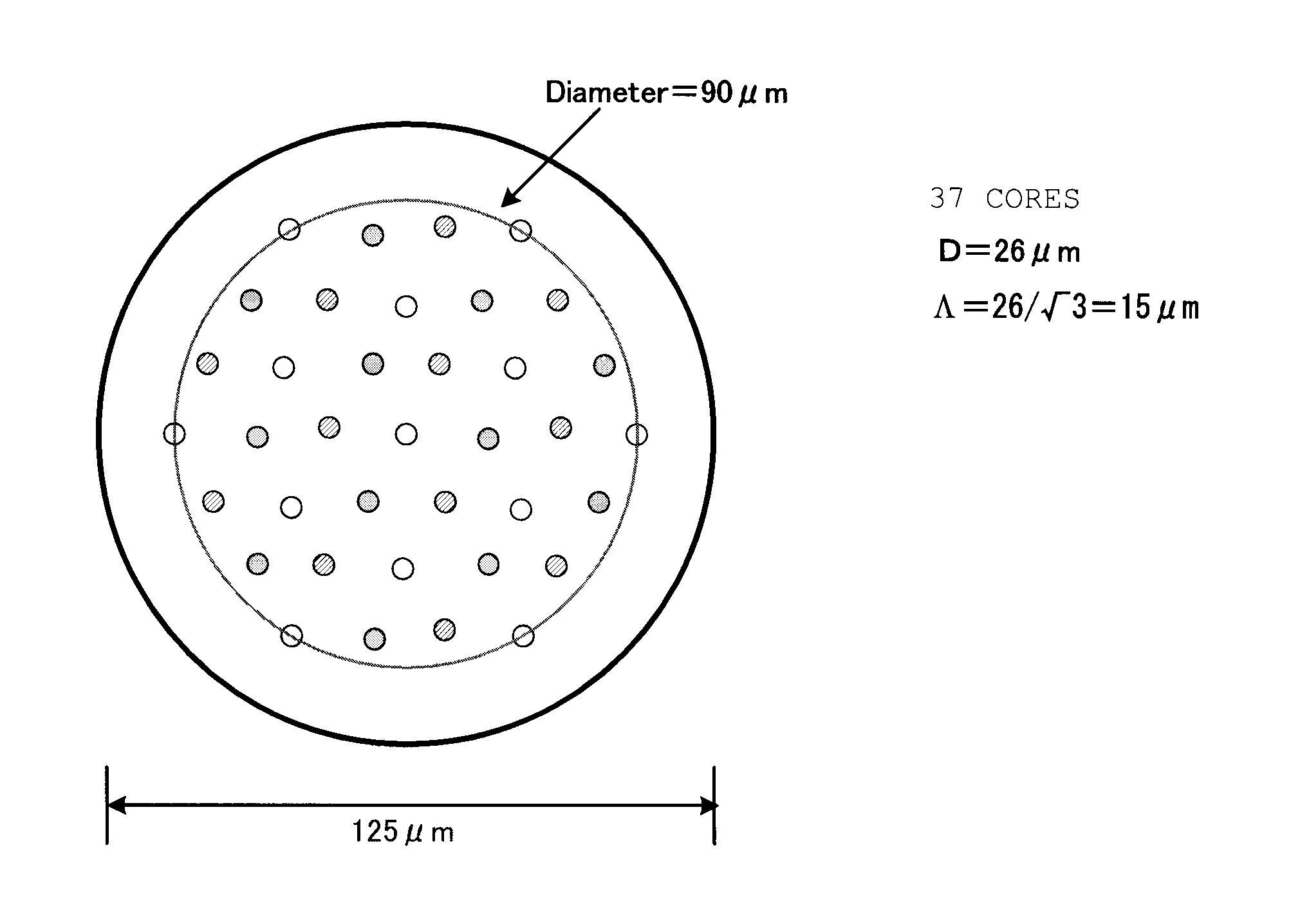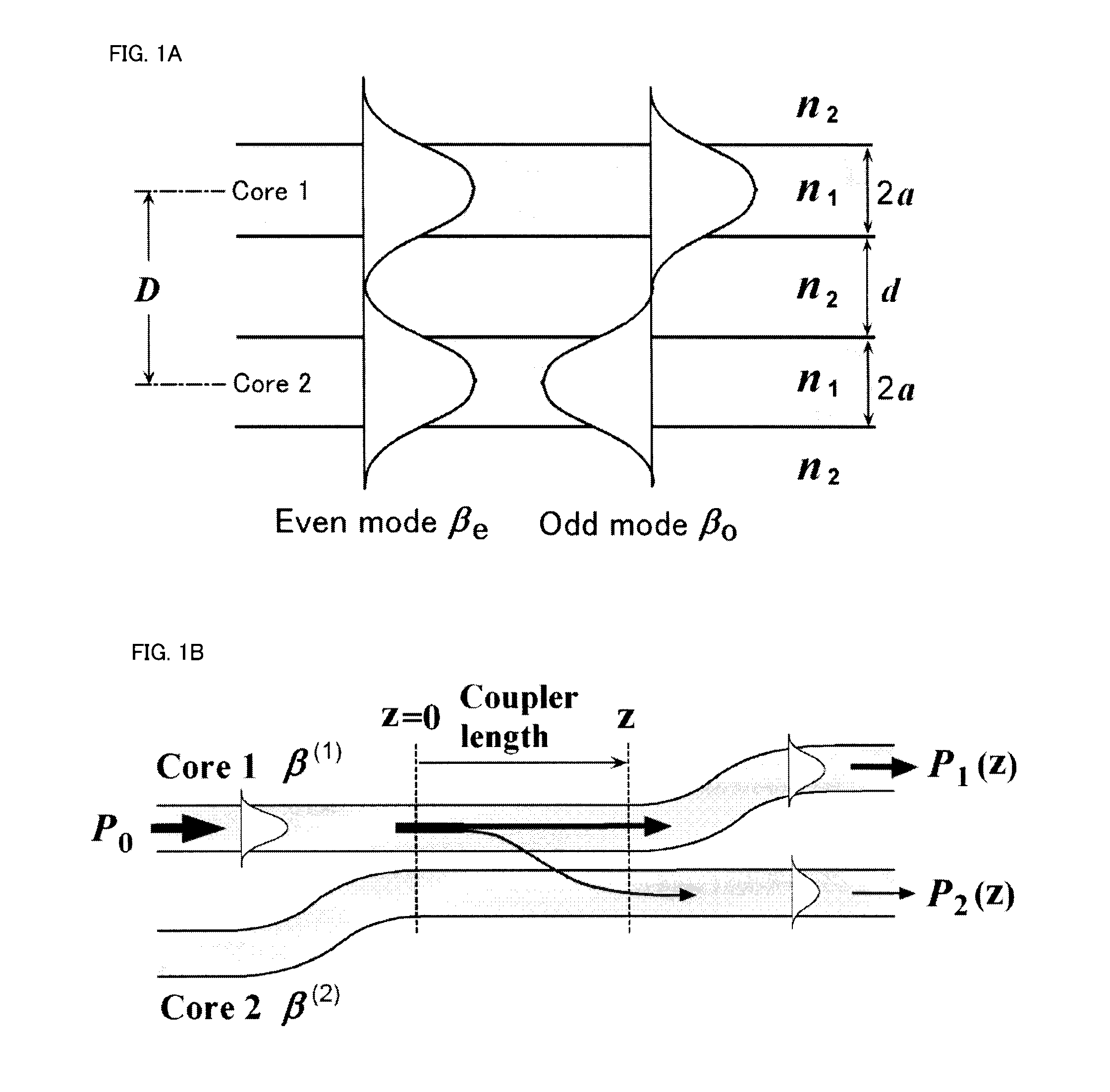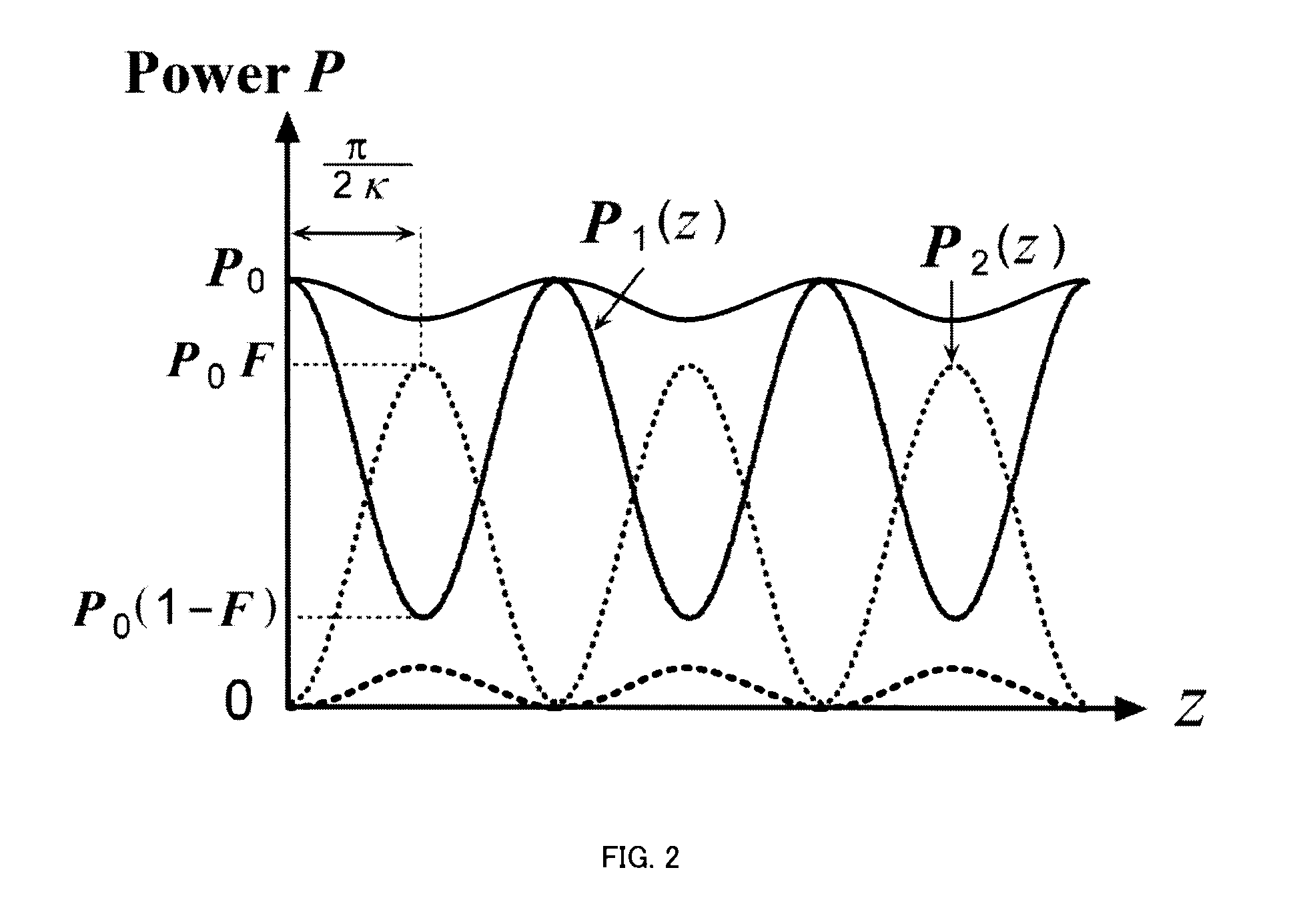Multicore fiber and core placement method for multicore fiber
a multi-core fiber and core placement technology, applied in the direction of optical fibers with multi-layer cores/claddings, optical waveguide light guides, instruments, etc., can solve the problems of difficult to increase the density of cores, and achieve the effect of reducing distance, increasing density of cores in multi-core fibers, and suppressing coupling
- Summary
- Abstract
- Description
- Claims
- Application Information
AI Technical Summary
Benefits of technology
Problems solved by technology
Method used
Image
Examples
Embodiment Construction
[0116]Embodiments of the present invention will be described in detail below with reference to the drawings.
[0117]The present invention relates to a multicore fiber that uses multiple single mode cores composed of heterogeneous cores with different propagation constants and homogeneous cores with the same propagation constant or that uses multiple single mode cores composed of only the homogeneous cores with the same propagation constant. The present invention varies the propagation constants of homogeneous cores, which have the same propagation constant, via a perturbation and suppresses the coupling between the homogeneous cores by varying the propagation constants of the homogeneous cores, thus reducing the homogeneous core-to-core distance for increasing the density of the multicore fiber.
[0118]The following describes the outline of how a propagation constant is varied by a perturbation in the present invention with reference to FIGS. 1-9 and describes an example of the configur...
PUM
 Login to View More
Login to View More Abstract
Description
Claims
Application Information
 Login to View More
Login to View More - R&D
- Intellectual Property
- Life Sciences
- Materials
- Tech Scout
- Unparalleled Data Quality
- Higher Quality Content
- 60% Fewer Hallucinations
Browse by: Latest US Patents, China's latest patents, Technical Efficacy Thesaurus, Application Domain, Technology Topic, Popular Technical Reports.
© 2025 PatSnap. All rights reserved.Legal|Privacy policy|Modern Slavery Act Transparency Statement|Sitemap|About US| Contact US: help@patsnap.com



